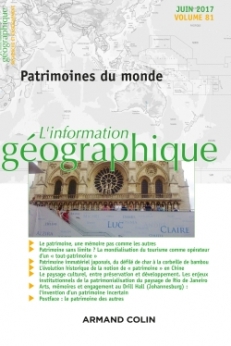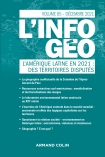
L'information géographique (2/2017)
Pour acheter ce numéro, contactez-nous
Recevez les numéros de l'année en cours et accédez à l'intégralité des articles en ligne.
Le mot « patrimoine » est dans l’air du temps en Chine, mais c’est un vocable moderne venant de la société occidentale. Le concept traduisant l’idée de « patrimoine » chinois est en réalité ancien. Des termes ont émergé à différents moments de l’histoire chinoise, reflétant les idées et les actions associées à la protection du « patrimoine ». Ainsi, fondé principalement sur des matériaux issus de documents historiques, de recherches académiques, de documents législatifs et de documents associés aux régulations gouvernementales, cet article tente d’étudier l’évolution historique de la notion de « patrimoine » et de protection en Chine avant 1840, durant la Chine « moderne » (1840-1949), puis contemporaine (après 1949).
Currently, the word “heritage” is prevailing in China, but it is a modern vocabulary from the western society. Before using this concept, China’s local "heritage" concept has existed for a long time. Those terms in Chinese context are formed through the different stages of Chinese history, reflecting the thoughts and the actions for protecting the heritage. Therefore, mainly based on data like historical documents, academic researches, government laws and regulations documents, this article attempts to study the historical evolution of the notion of “heritage” and the heritage protection in China through different periods : before 1840, the “modern” China (1840-1949), and the contemporary China (after 1949).

